23Black pine
Pinus nigra
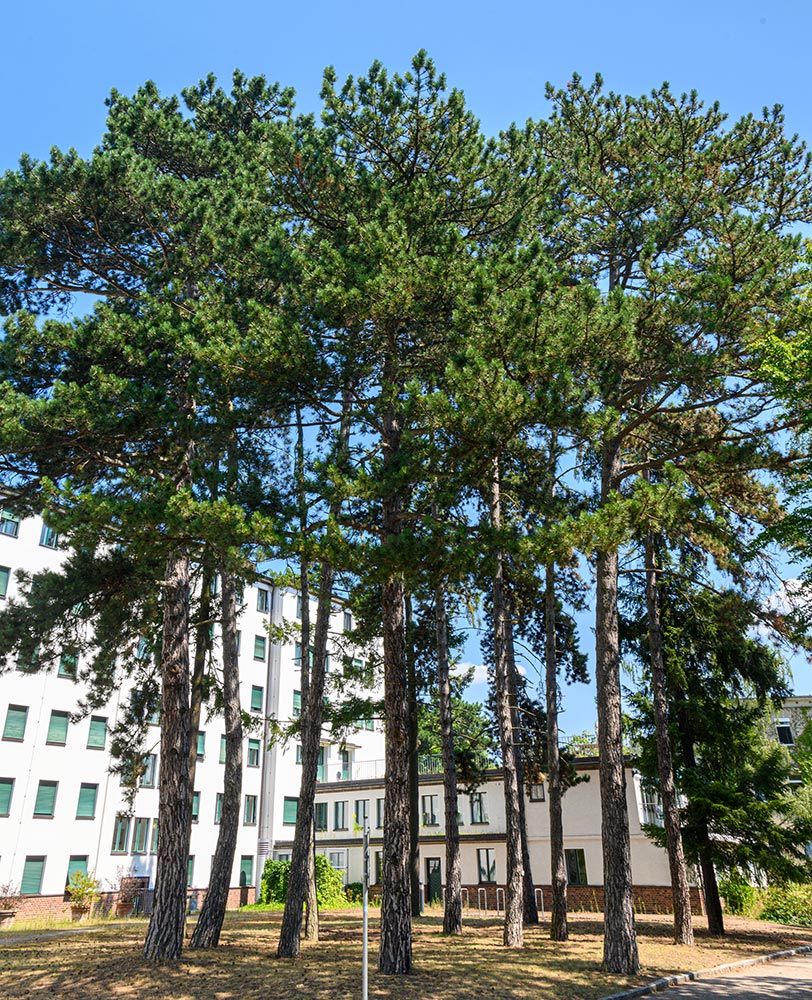
Next to the Oskar and Cécile Vogt House is station 23 of the tour. Here grows a group of Austrian or black pines, botanical name Pinus nigra, from the pine family or Pinaceae. The dark gray bark and deep dark green needles give these trees a somber appearance and lend this magnificent conifer its name. Incidentally, the name conifer means cone bearer, from Latin conus for "cone" and ferre for "to bear." The German name Kiefer also goes back to this. It comes from the Old High German term "Kienforha", from Kienföhre, a compound term containing the original word for the pine: Föhre or Fole.
Black pines are medium-sized woody plants with straight trunks that can grow up to forty meters in height. Their crown begins as slender, then becomes increasingly round to umbrella-shaped with age. The height and crown shape vary depending on the subspecies and location. With age, the brownish-gray trunk bark cracks open, and longitudinal cracks form. The older the tree, the deeper the cracks. The needles are straight or slightly curved and usually remain on the tree for a whole year. Depending on its location, the black pine flowers sometime between April and June. The female flower cones are in groups of two to four. Their color changes from initially green to crimson. The cones mature in the second fall after flowering and are shed the following spring - after the seeds have been released.
Black pines are long-lived, attaining ages up to 800 years. Their original range includes mainly mountainous areas of the Mediterranean countries of southern Europe, Asia Minor and western North Africa. All of the subspecies of the black pine are very light-demanding and heat-loving, but also resistant to cold, able to cope with temperatures down to about -30° Celsius. The black pine has low soil requirements, which is why it is popular in efforts to reforest nutrient-poor sites. Because it has strong root systems and is also relatively insensitive to salt water, it is often planted as a windbreak on coasts. Its insensitivity to atmospheric pollution and its resistance to disease make it a popular park and forest tree worldwide. In German gardens, however, it is considered a rarity.
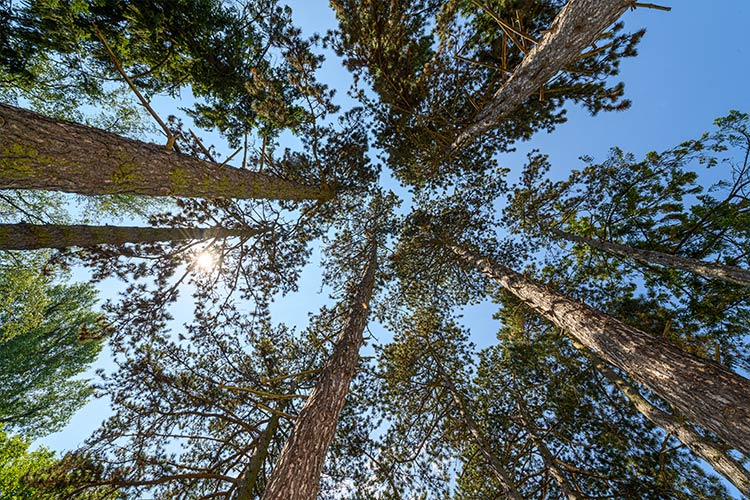
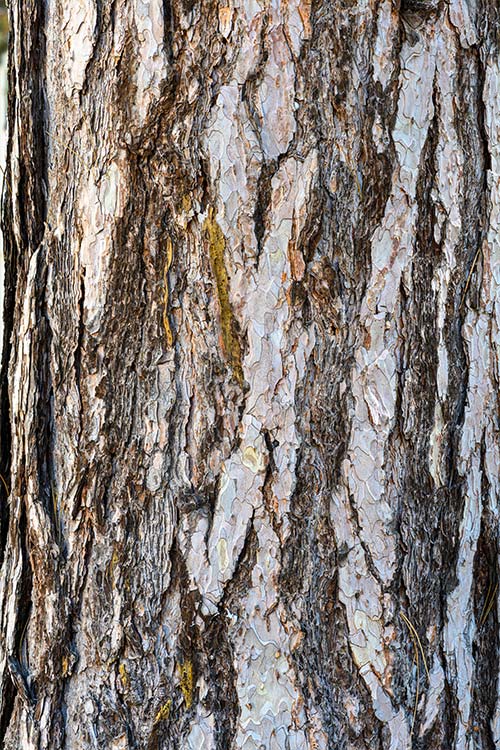
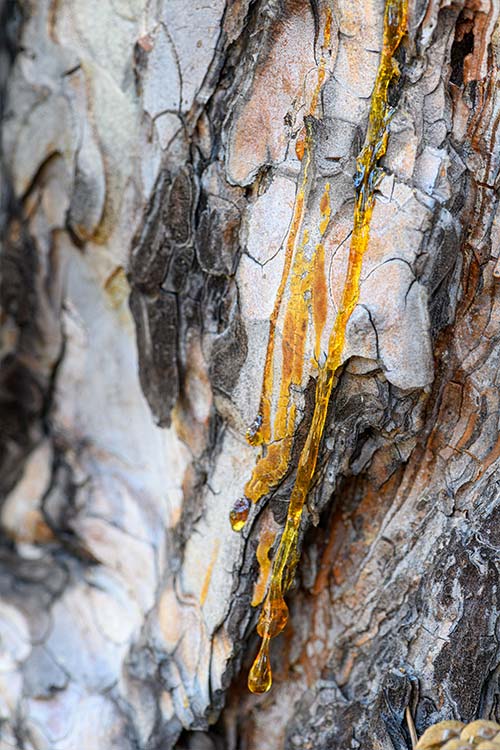

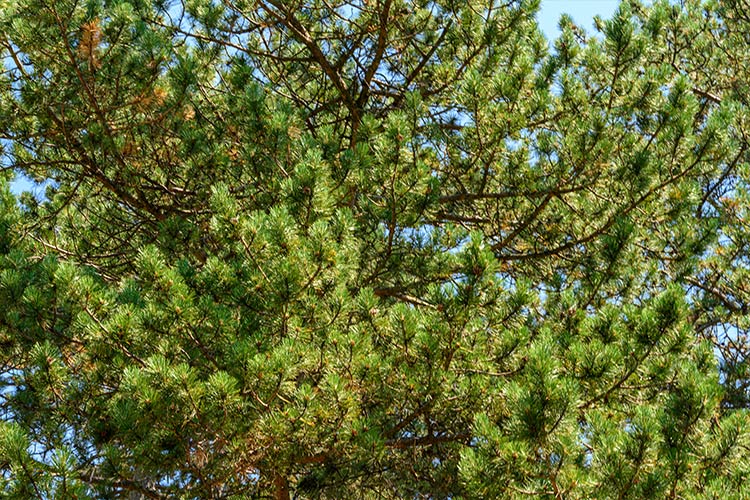
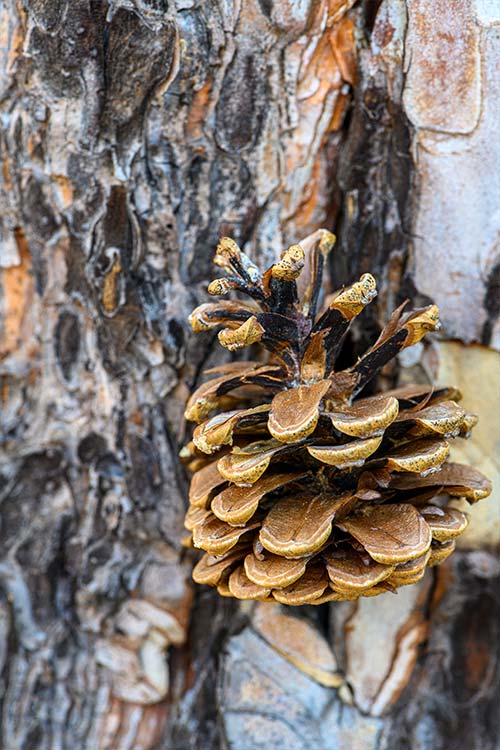
Like all conifers, black pines contain essential oils. In addition to the wood, mainly the resin has found uses. Up to two kilograms per tree can be tapped by so-called pitchers. The fresh resin exudates from conifers are called turpentine. A highly volatile oil- and resin-dissolving turpentine oil can be separated out by distillation, for use in the production of varnishes. It is also used in medicine, because the main component of turpentine oil is the toxic bicyclic monoterpene alpha-pinene, which is also the starting material for the synthesis of camphor. Distillation of the crude resin leaves the solid components. They are referred to as rosin. Because of its adhesive properties, rosin is used today in handball and weightlifting, for example. In the past, it was also used as a sealing material. Applied to the hair of the bow of musical instruments, it increases the static friction with the string and helps to elicit notes. Because rosin has antiseptic properties and promotes blood circulation, it has been used since ancient times to treat abscesses and purulent skin ulcers. When added to ointments and plasters, it helps relieve rheumatic pain. Today, rosin is also used as an activator and flux in soft soldering.